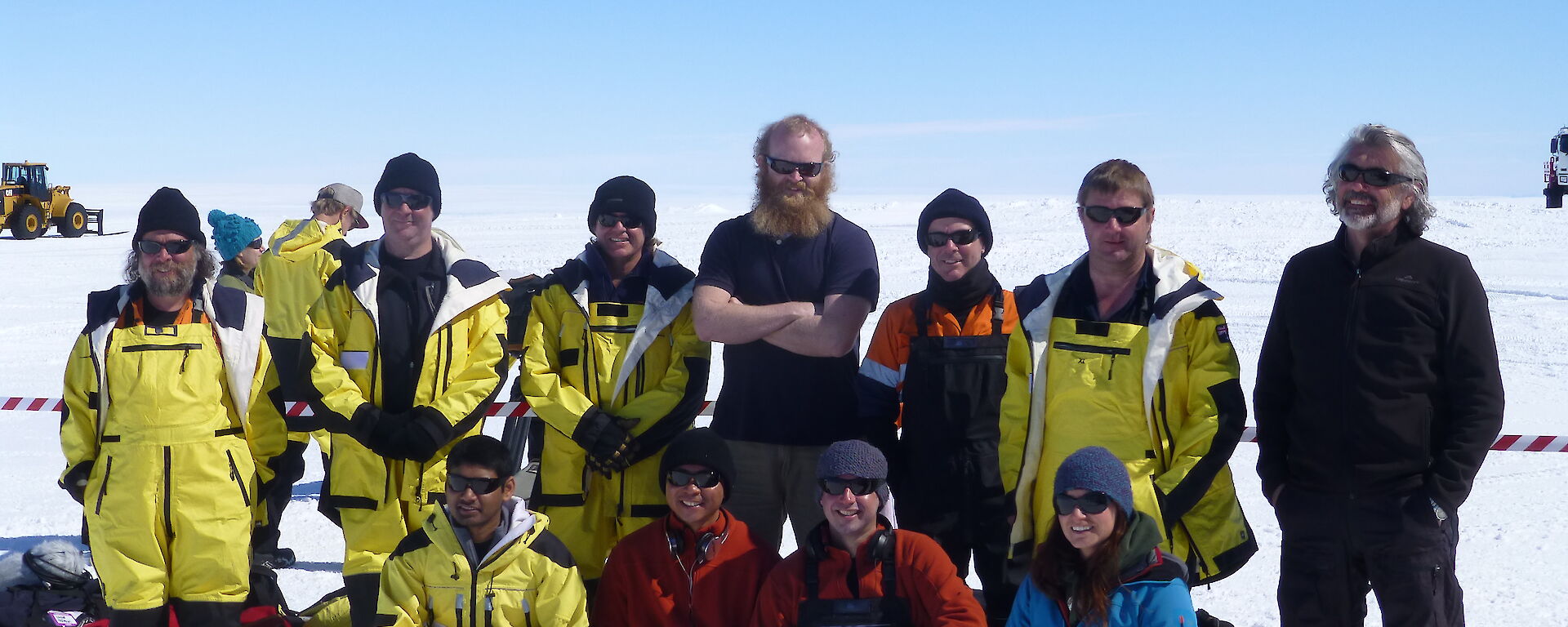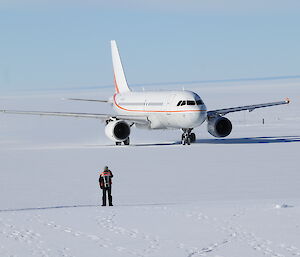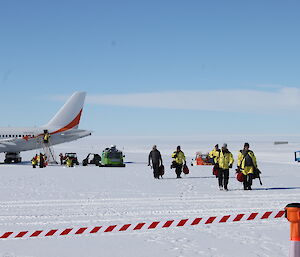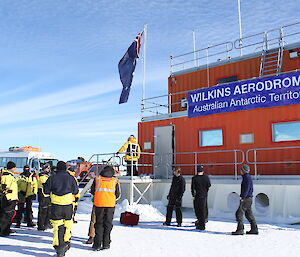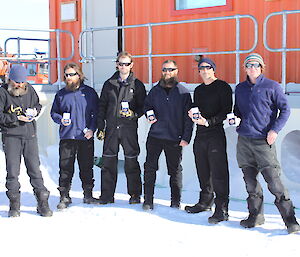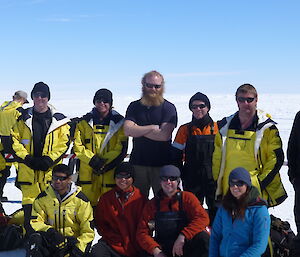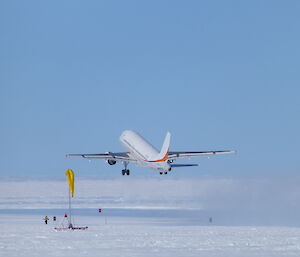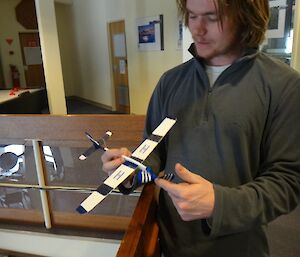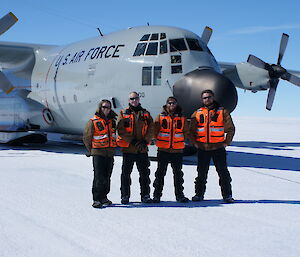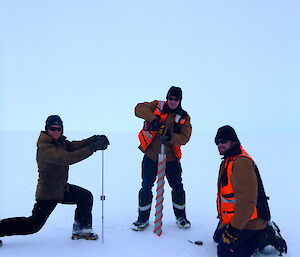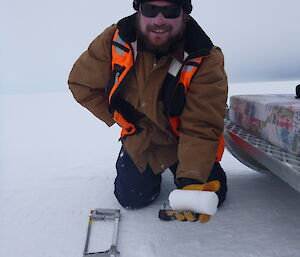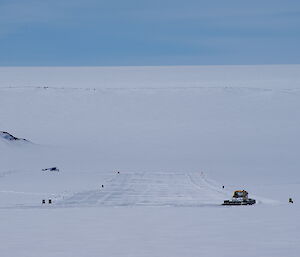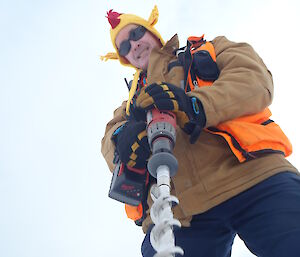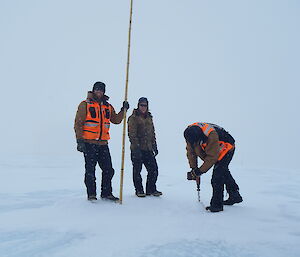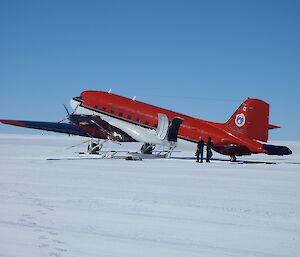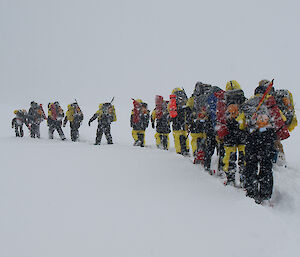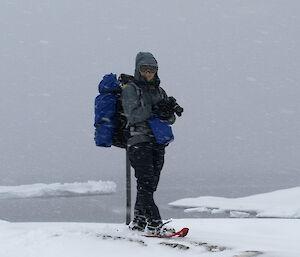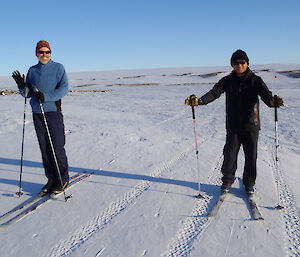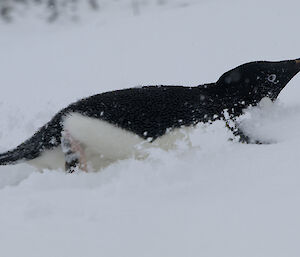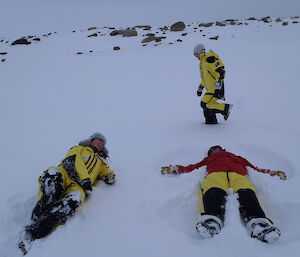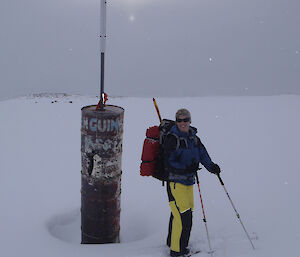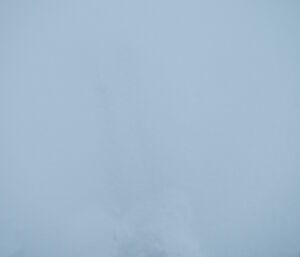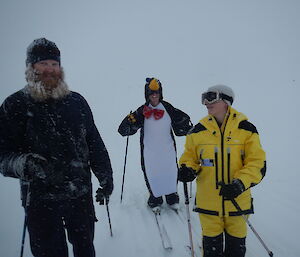On Nov 28 and Dec 3, the first two A319 flights for the season landed at Wilkins Aerodrome. This has meant that expeditioners have left station after their winter and new expeditioners have arrived for the summer program. Over these two flights, 18 expeditioners, who spent just under 12 months at Casey returned to Australia. Undertaking a winter in Antarctica takes a special commitment and the current expeditioners at Casey wish all those expeditioners who have recently returned home all the best for the future.
This week at Casey: 6 December 2013
The life of an AGSO
If you love your job you will never work a day in your life… we haven’t done a days work yet!
Many people question what exactly we Aircraft Ground Support Officers (AGSOs) do when we disappear off into the horizon. Throughout the following account you will get a rare insight into the mysterious happenings of the life of an AGSO. Enjoy.
After a very slow winter aviation program (a grand total of zero winter flights) Ben was extremely happy to get the first aircraft in and unload a few more hi-vis clad, happy lads eager to get right into some good old fashion aircraft ground support.
Following many countless shifts of observing the weather, the excitement of actually being in Antarctica and making preparation for the arrival of the second LC-130 Hercules, one might suggest it would be time for the AGSOs to kick back and relax but unfortunately this is not the case.
There’s always plenty to do. For example, density and hardness testing, setting up an alternate landing site and maintaining the cane lines to both the ski landing area and alternate field landing site.
One of our duties is to collect data on the density of the ski landing area (SLA) surface. This is a weekly occasion enjoyed by all AGSOs and traditionally held on Wednesdays. Zigzagging our way up the SLA every 50 metres we take a core sample. This core sample is measured and weighed to determine the density, this is one factor that is used to determine the serviceability of the SLA.
Another determining factor is the hardness of the surface. We test this using a snow penetrometer. This involves repeatedly dropping a weight down a shaft to drive a spike into the surface. When the spike has intruded 300mm into the surface, the number of drops needed to do this is recorded and is used to determine the hardness of the surface.
Mitchell field landing site
One of our other roles this season is to set up an alternative field landing site at Mitchell Peninsula (approximately 5km to the south of Casey station). This site was chosen both for its proximity to Casey station and its lower elevation, in the hope that during unexpected times when low cloud or fog is affecting Casey SLA, a landing at the alternate site might be possible.
This week we took the groomer and grader blade (behind our Quad Trac tractor) to the alternate site, and using the groomer we levelled the strip. We then used the grader to take out the big bumps and loosen the snow. Then we finished it off with another groomer run. As you can see from the below photo we got quite a good result! Beautiful!
SLA cane line maintenance
The road to the SLA and most other routes to the huts and other sites scattered around the Casey region are marked with bamboo canes. We use this road almost daily and we maintain it as a fairly smooth driving surface. This is appreciated by all on station. When visibility is poor, the bamboo canes along with our GPS guide our way to and from work. The bamboo canes eventually buckle under the pressure of the regular strong easterly winds and require replacing.
Aurora Basin
We’re now getting ready to start the main project for the summer; supporting air transport between Casey and the Aurora Basin ice core project. Many tonnes of equipment will be transported by Basler between Casey and Aurora Basin. During the project ice cores will also be flown back to Casey for freezer storage to return to Australia for analysis.
A word from Blair
This week my duties as a junior AGSO took me to Australia’s Antarctic aviation hot spot, the Wilkins aerodrome. It was an early start for the convoy of James in the Hägglunds and myself in the challenger. The colours at this time of day in Antarctica are truly breathtaking, definitely a highlight so far. The A319 (Flight FA02) landed softly and the Wilkins team went into action with passengers and cargo all safely unloaded and loaded.
With all the cargo on board and a smile from ear to ear (a common condition in Antarctica) I left Wilkins bound for Casey. After such an awesome day and experience I thought I’d sum it up with a short poem:
With the sun at my back
And the moon at my brow
I said to myself
you’re in paradise now.
Casey recreation program
This season at Casey we are running a new initiative called ‘Recreation Sunday’. This involves planning and coordinating a range of recreational activities for all station personnel to be involved to help everyone rest, relax and enjoy Casey station and it’s local surroundings. To date we have organised guided walks to Shirley Island to visits the Adelie penguin rookery, cross country skiing lessons, guided quad rides, and a walk-run-ski event from A-08 back to Station (A-08 is a navigation mark 8 kms from station).
Cross country skiing is becoming very popular and Casey has a 4km ski loop starting from station, which has recently seen a high amount of snowfall. Lessons have been well attended, with participants ranging from those who have never used skis before through to seasoned experienced skiers.

